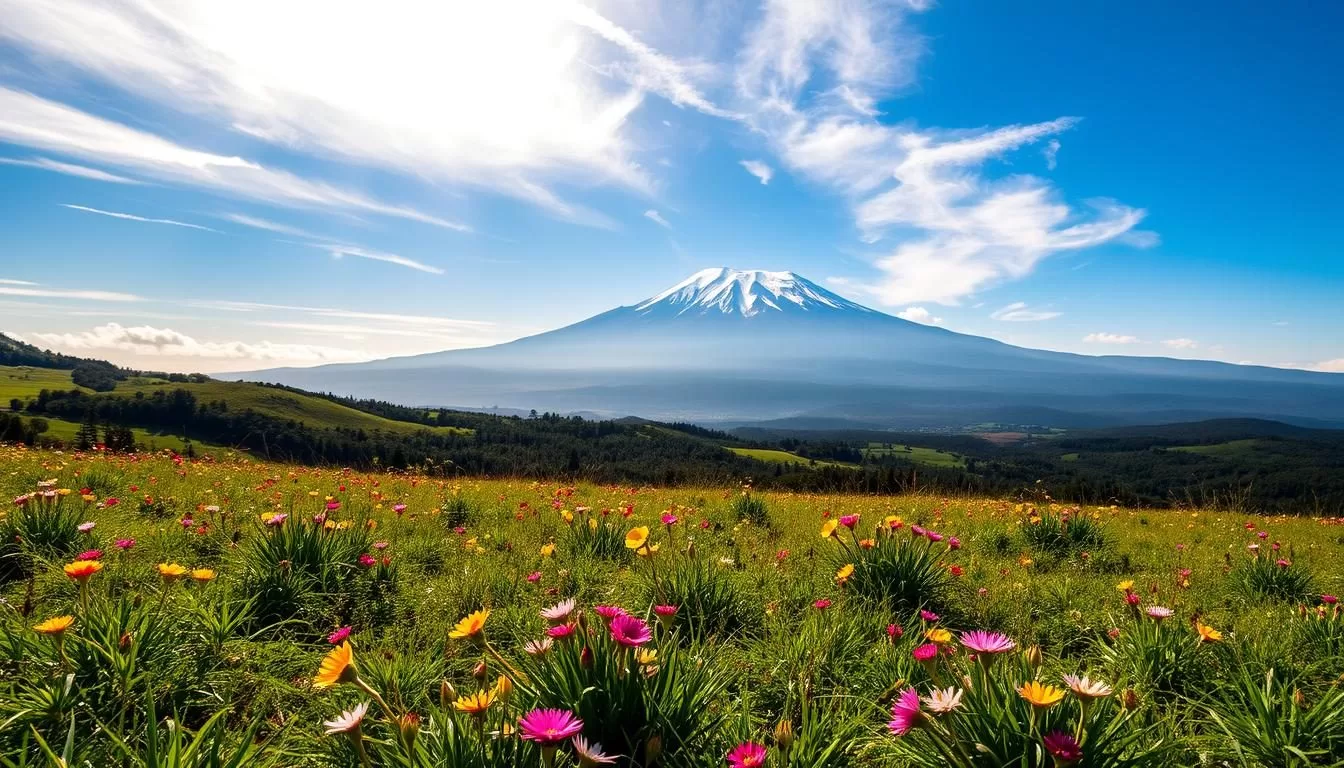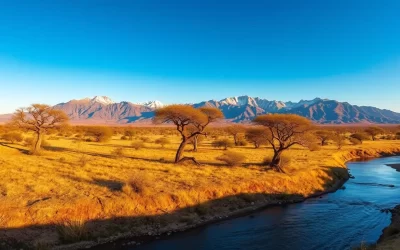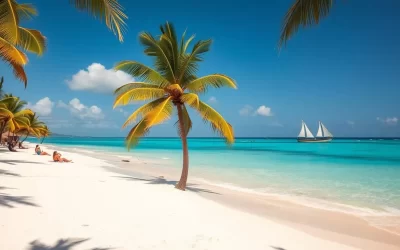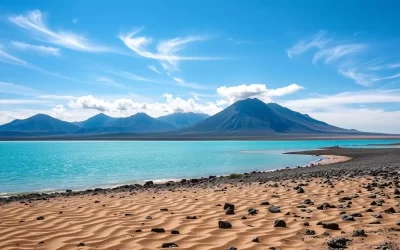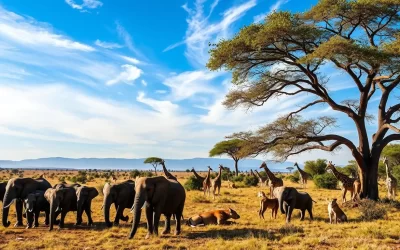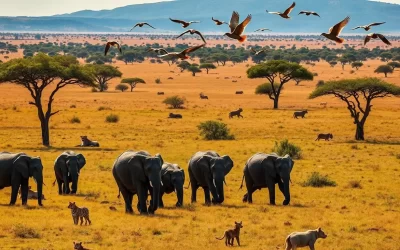✓ Accommodations✓ Flights✓ Rental Cars
Imagine standing at the foot of Africa’s second-highest peak, surrounded by a diverse landscape of alpine rivers, verdant woods, and steep hills. Mount Kenya National Park offers an unparalleled experience with its vast array of activities, including hiking, wildlife viewing, and bird watching across 715 square kilometers of protected wilderness.
As a destination recognized by UNESCO, this national park is not only an ecological treasure but also a cultural monument. Your visit contributes to ongoing conservation efforts, helping preserve this vital nature reserve that supplies nearly half of Kenya‘s population.
Whether you’re a casual day-tripper or a serious mountaineer, Mount Kenya has something for everyone, making it a premier safari destination in the region.
Discovering Mount Kenya National Park
Nestled in the heart of Kenya, Mount Kenya National Park awaits your discovery. This remarkable destination is not only a haven for nature lovers but also a site of profound cultural significance.
Africa’s Second Highest Peak
Mount Kenya is Africa’s second-highest peak, attracting climbers and adventure seekers from around the globe. The park’s diverse landscapes, from lush forests to alpine moorlands, offer a unique hiking experience. As you ascend, the changing ecosystems present a fascinating study of nature’s adaptability.
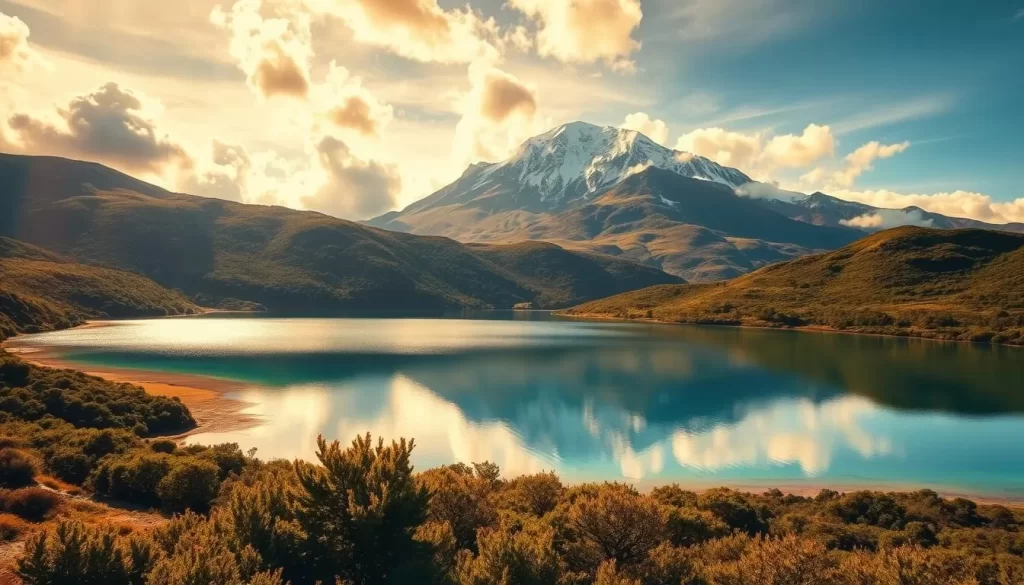
UNESCO World Heritage Site Status
In 1997, Mount Kenya National Park was designated a UNESCO World Heritage Site, recognizing its ecological and cultural importance. The park is a cultural monument for the Kikuyu people, who consider Mount Kenya the terrestrial home of their deity Ngai. This designation highlights the park’s role in supporting local communities and conserving biodiversity.
The park’s status as a UNESCO Biosphere Reserve since 1978 underscores its significance as a water catchment area, supplying millions with water and hydroelectric power. Your visit contributes to the conservation efforts, supporting the delicate balance between human needs and environmental protection.
Best Time to Visit Mount Kenya National Park
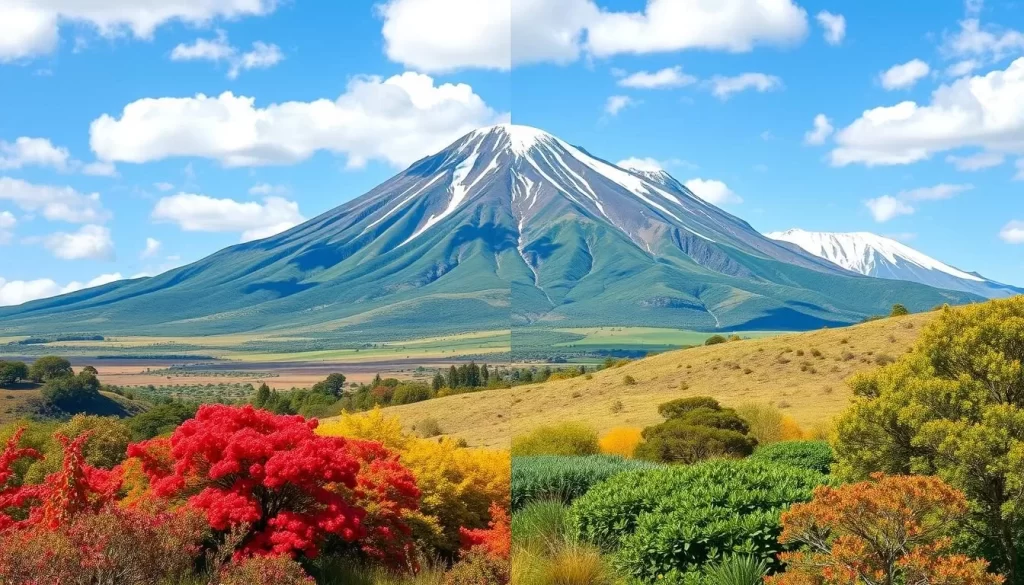
Understanding the climate and seasonal variations is key to a successful visit to Mount Kenya National Park. The park’s unique topography and location create a variety of climates, making it essential to plan your visit at the right time to have the best experience.
Seasonal Considerations
The climate of Mount Kenya National Park plays a significant role in shaping its topography and attracting tourists. The park experiences a range of climates due to its height and location. The Kenya National Park’s climate varies significantly with elevation.
Climate and Weather Patterns
Mount Kenya creates its own microclimate, with temperatures decreasing approximately 6°C for every 1,000m increase in elevation. You’ll need to prepare for significant temperature variations, from warm days (around 25°C) at lower elevations to freezing conditions (below 0°C) near the summit, especially at night.
- Mount Kenya creates its own microclimate, with temperatures decreasing approximately 6°C for every 1,000m increase in elevation, giving you the unique experience of traversing multiple climate zones in a single day.
- You’ll need to prepare for significant temperature variations, from warm days (around 25°C) at lower elevations to freezing conditions (below 0°C) near the summit, especially at night.
- The mountain’s eastern slopes typically receive more rainfall than the western side, which might influence your choice of route depending on the time of year you visit.
- Morning hours generally offer the clearest weather conditions with cloud cover often building throughout the day, making early starts essential for the best views and photography opportunities.
- Your experience will be influenced by the mountain’s unique weather patterns, where clear, sunny mornings can rapidly transform into misty, wet afternoons regardless of the season.
- Understanding the daily weather cycles helps you plan your activities more effectively, with summit attempts typically starting in the early morning hours when conditions are most stable.
Hiking Adventures on Mount Kenya
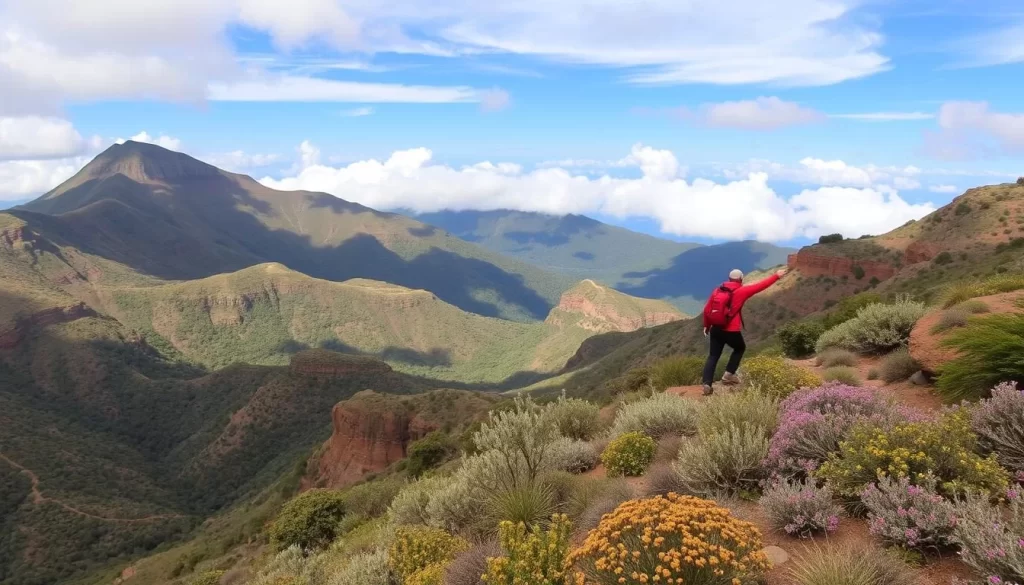
Embark on an unforgettable hiking adventure on Mount Kenya, where diverse trails await your exploration. The park offers a range of hiking experiences, from challenging summit routes to more leisurely day hikes that allow you to enjoy the natural beauty of the area.
Popular Summit Routes
The most popular summit route on Mount Kenya is via the Naro Moru route, known for its direct ascent to the peak. This route is favored by many due to its relatively straightforward path, although it is still a challenging climb.
The Naro Moru route is particularly notable for its scenic views and the opportunity to experience the unique high-altitude environment of the mountain.
Day Hiking Options
For those who prefer a less demanding experience, day hiking options are available on Mount Kenya. You can enjoy a fulfilling day hike without committing to a multi-day expedition, with several trails accessible from the park gates.
A popular day hike is from the Naro Moru gate to the meteorological station and up to an observation point at 3,800m, offering spectacular views of the main peaks. This hike typically begins early in the morning and includes a 3.5-hour ascent and a 1.5-hour descent.
Wildlife Encounters in the Park
As you explore Mount Kenya National Park, you’ll encounter a rich variety of wildlife in their natural habitats. The park’s diverse ecosystems support a wide range of animals, from forest dwellers to alpine specialists.
Mammals to Spot
The park is home to a variety of mammals, including elephants, buffalos, and several species of antelopes. You might also catch a glimpse of the elusive bushbuck or the majestic elands. To maximize your chances of spotting these animals, consider joining a guided tour.
| Mammal | Habitat | Best Viewing Time |
|---|---|---|
| Elephant | Forest and bamboo zones | Early morning |
| Buffalo | Forest | Late afternoon |
| Bushbuck | Forest | Dawn or dusk |
Game Drives and Wildlife Viewing Tips
To enhance your wildlife viewing experience, join game drives in the lower sections of the park. Early morning and late afternoon are the best times for wildlife viewing. Bringing binoculars can significantly improve your chances of spotting animals, especially in dense forest areas.
- Maintain a respectful distance from all wildlife, particularly elephants and buffalos.
- Guided safaris provide valuable expertise in spotting camouflaged animals.
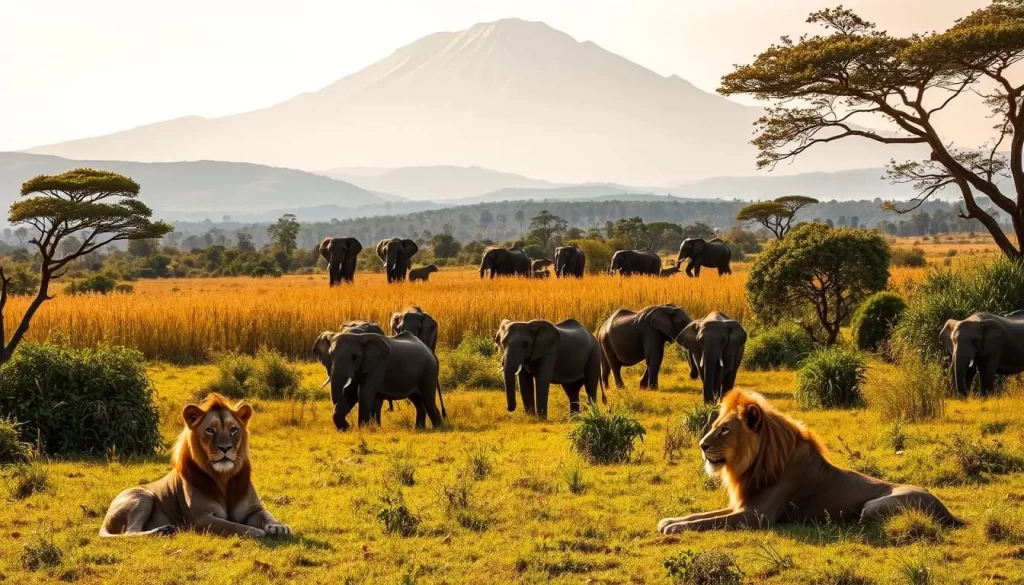
Bird Watching Paradise

Bird watching in Mount Kenya National Park is an unforgettable experience due to its rich avifauna. The park’s diverse ecosystems, ranging from forest to alpine zones, host a wide variety of bird species.
Alpine and Forest Bird Species
The park is home to a range of bird species, from those found in the dense forest to those thriving in the alpine zones. The bamboo zone at around 2,500m elevation is particularly noteworthy, with species like the Abyssinian Crimsonwing and White-starred Robin often seen here. The forest edges and clearings are also productive for bird watching, attracting species from multiple habitats.
Best Spots for Birding
For an optimal birding experience, the Naro Moru track and the Sirimon route are considered among the best locations, offering accessible bird watching without strenuous hiking. Early morning sessions are recommended when birds are most active. Additionally, the lodge grounds within and around the park attract numerous bird species to their gardens and feeding stations, providing convenient viewing opportunities.
Nature Walks Through Diverse Ecosystems
Mount Kenya National Park offers a unique opportunity to experience nature walks through a variety of landscapes, from lush rainforests to harsh alpine zones. As you climb up through the deep rainforest, you’ll be surrounded by big oak, mahogany, and camphor trees. The weather is typically wet and cool in the morning, making it ideal for a Mount Kenya day hike.
Rainforest Exploration
The rainforest is a treat to explore, with its scenery being just amazing as you watch the forest interspersed with some grass openings and very cool and clear watered rivers. The tranquility of the forest, coupled with the sound of birds and the rustling of leaves, creates an immersive nature experience.
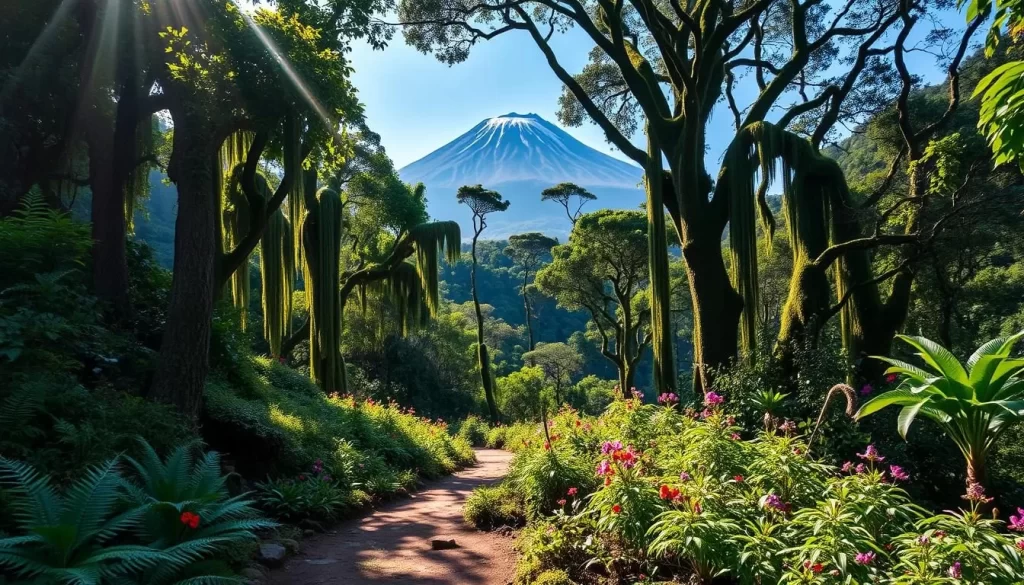
Moorland and Alpine Zones
As you ascend from the forest into the moorland zone (3,000-3,500m), you’ll witness dramatic landscape changes, with giant heathers, tussock grasses, and iconic giant groundsels and lobelias creating an almost otherworldly environment. The alpine zone above 3,500m presents a harsh but beautiful landscape of rock, scree, and specialized plants adapted to extreme conditions. Your nature walks in these higher zones offer unparalleled views across the mountain and surrounding landscapes, providing a unique experience in Mount Kenya National Park.
The unique plant adaptations you’ll observe include the water-storing rosettes of giant lobelias and the insulating dead leaves that cloak the stems of giant groundsels. You might also spot specialized high-altitude wildlife, such as the Mount Kenya rock hyrax and various sunbirds that feed on the nectar of lobelias.
Mount Kenya National Park, Kenya: Best Things to Do for Adventure Seekers
If you’re an adventure enthusiast, Mount Kenya National Park is your ultimate destination. The park offers a range of thrilling activities that cater to different interests and adventure levels.
Camping Under the Stars
Camping is a popular activity in Mount Kenya National Park, allowing you to immerse yourself in nature. You can set up your campsite in designated areas, enjoying the serene environment under the starry sky. The experience of camping near Mount Kenya is unforgettable, with the sound of wildlife and the majestic mountain views.
- Choose from various campsites, ranging from basic to more equipped sites.
- Enjoy stargazing on clear nights, with minimal light pollution.
- Experience the tranquility of the natural surroundings.
Experiencing the Equator
One of the unique experiences you can have near Mount Kenya is standing on the equator. The imaginary line passes through Nanyuki town, just north of the mountain. You can visit marked points along the equator for memorable photos and demonstrations of the Coriolis effect.
| Location | Experience |
|---|---|
| Nanyuki Town | Stand on the equator line |
| Fairmont Mount Kenya Safari Club | Be on both hemispheres simultaneously |
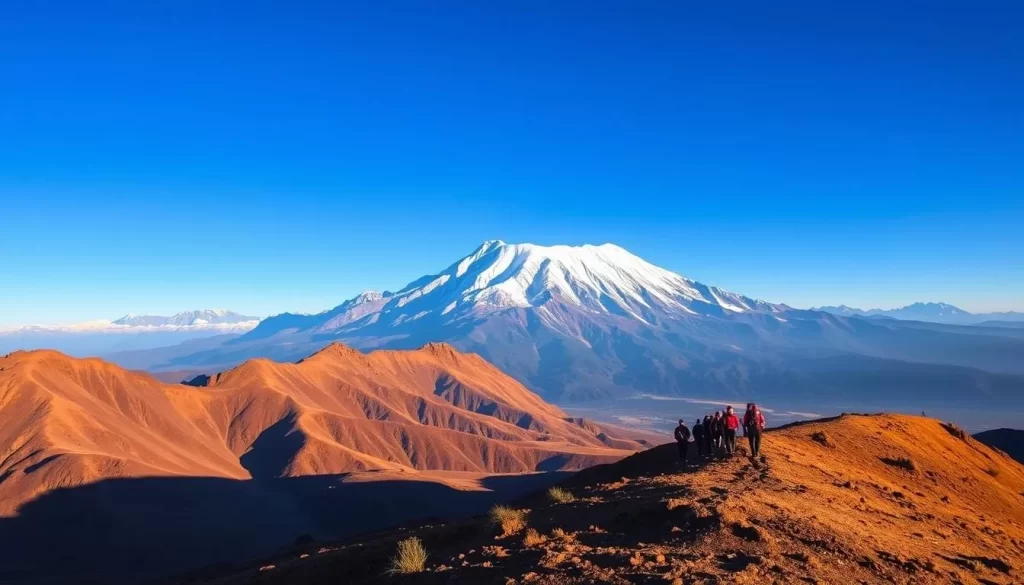
Visiting the equator is one of the best things to do in the region, offering an educational and fun experience. It’s a unique experience that adds value to your trip to this destination.
Accommodation Options
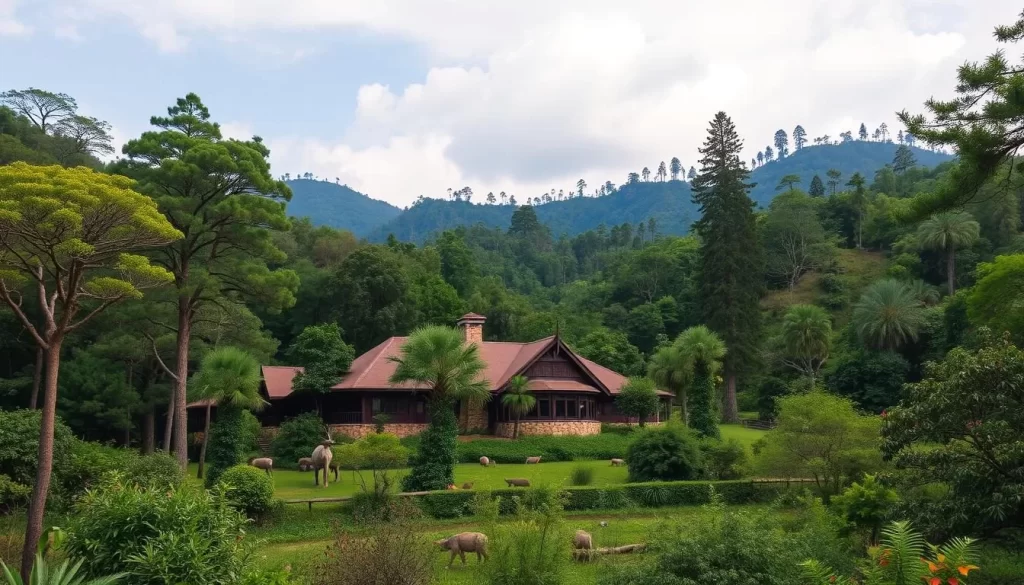
Mount Kenya National Park offers a diverse range of accommodations to suit various budgets and preferences. You’ll find a variety of lodging options around the park, from luxury lodges to simple mountain huts.
The Serena Mountain Lodge is a notable choice, offering a unique tree-hotel experience on the lower slopes of Mount Kenya. It features a waterhole that attracts wildlife, allowing you to observe animals from the comfort of the viewing deck. Other luxury options include the Fairmont Mount Kenya Safari Club and Segera Retreat, which provide high-end amenities and exceptional service.
For those on a budget or planning multi-day treks, there are mountain huts and camps along the major routes, such as Austrian Hut, Mackinder’s Camp, and Shipton’s Camp. The Kenya Wildlife Service manages several self-catering bandas and public campsites at the park gates, providing affordable options.
Your accommodation choice may be influenced by your planned activities. Properties on the eastern side are better positioned for the Chogoria route, while those to the west offer easier access to Naro Moru and Sirimon routes. Many lodges can arrange comprehensive Mount Kenya trips and safaris, handling logistics including transportation, guides, porters, and park fees.
The above is subject to change.
Check back often to TRAVEL.COM for the latest travel tips and deals.
